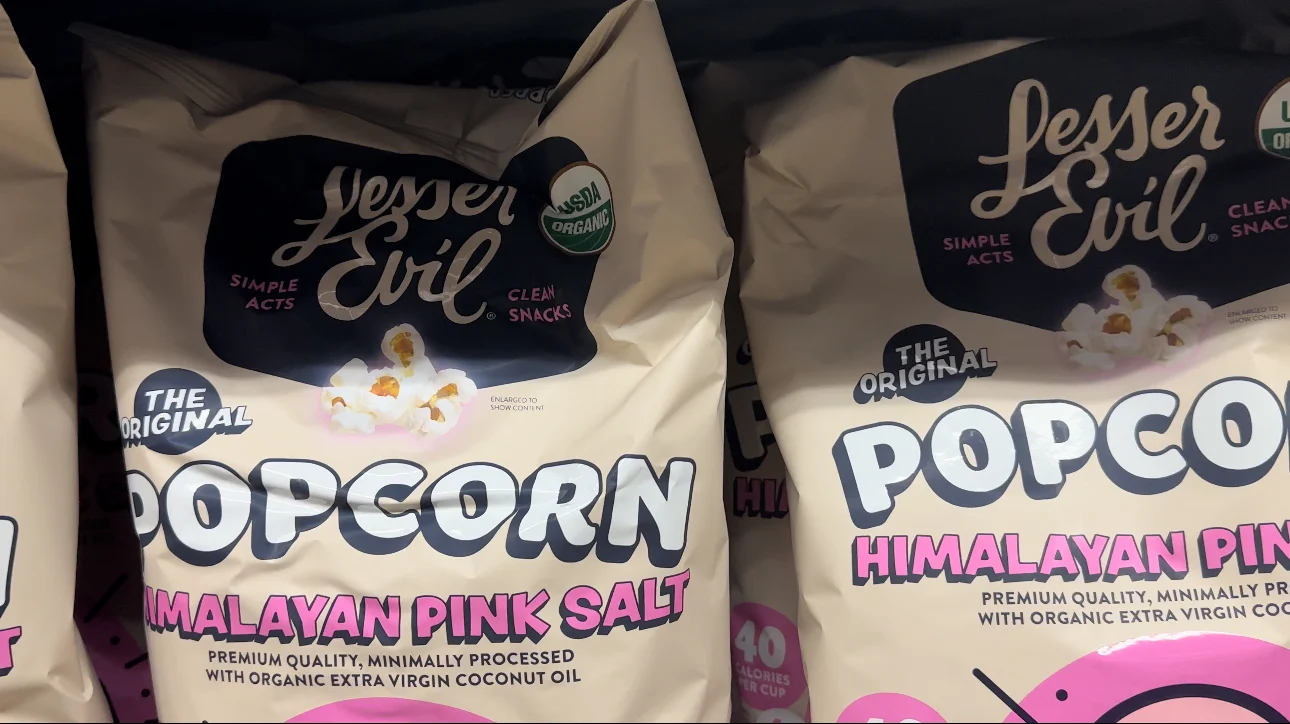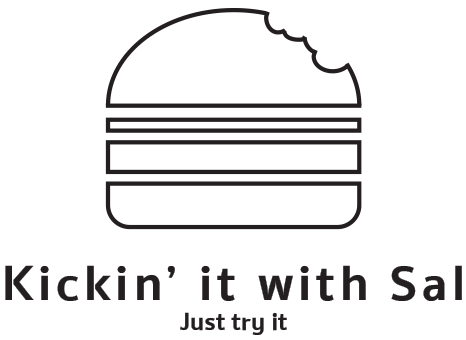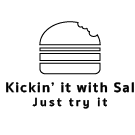Transcription from my latest Food Forecast video!
The clean trend made its way from beauty to food, popularized by celebrities and influencers. As more and more beauty influencers expose the sham of clean beauty, we can predict or make the assumption that it is expected to rapidly extend to the food industry.
From beauty to food- this is Food Forecast, where we analyze marketing trends across various industries to predict their influence on the food world and its impact on the food industry.
Imagine standing in a supermarket aisle, your eyes scanning a a bunch of food packaging. One product catches your eye: a box with images of fresh fruits and claims of being “all-natural,” “organic,” and “non-GMO.” Or even clean? This scenario happens every time you enter a grocery store, as millions of consumers figure out what they want to purchase and are easily swayed by the strategic allure of food packaging that are carefully crafted to create an illusion of healthiness, when reality they are trying to sell you something.
Food packaging does serve as a medium of communication, where colors, images, and health claims try to attract consumers. When I see more minimalistic and less chaotic design I tend to think it will have less ingredients and be healthier or to some maybe clean?
But how do we define clean food? One way would be to look at FDA guidelines, but the word clean doesn’t exist in the FDA guidelines so what do we do next? I mean of course the next step would be to look at what the influencers are saying it is. Influencers heavily influence food choices, leading to confusion and skepticism among consumers.
When comparing how other industries are responding to the term “clean,” I’ve noticed an uptick in beauty influencers and creators debunking the misconceptions surrounding clean beauty. They’re educating their audience on the lack of regulation in the clean beauty sector, emphasizing that companies can make claims without scientific evidence and without facing legal consequences. This trend and scrutinization is creeping in the food industry, where terms like “clean food” or “clean eating” are also being scrutinized by food influencers, revealing similar tactics of repackaging products to appear more environmentally friendly or health-conscious.
At the end of the day, whether it’s clean food or ultra-processed, unhealthy options, consumers are still being sold something. Food startups are capitalizing on this trend, using phrases like “food should be clean” and “avoid ingredients you can’t pronounce” in their marketing. However, this approach often plays on food fear-mongering, suggesting that if something isn’t “clean,” it must be dirty or filled with chemical. In reality, the world of food isn’t so black and white guys.

What Even is Clean Eating?
While there isn’t a definition of clean eating, the general concept according to social media and various bloggers involves selecting whole foods and minimally processed options. This includes a variety of foods like fruits, vegetables, whole grains, legumes, nuts, seeds, and quality proteins. Ideally, choices are organic and reflect seasonal availability in your area. Additionally, when choosing packaged foods, those with shorter ingredient lists and limited added sugars are preferred.
While the idea of clean eating has positive aspects, it has also been taken to extremes. Some advocates advocate for eliminating all forms of added sugars, preservatives, gums and artificial ingredients. However, this strict approach may not be practical for most people and can lead to nutrient deficiencies. The movement has been fueled by influencers and celebrities making unsubstantiated claims about the benefits of clean eating, leading to misinformation and unrealistic expectations. In many cases, a cult-like extremism is encouraged by wellness bloggers and celebrities who have no nutrition qualifications or evidence to back up some of their promises, including claims that their version of clean eating will change your life or cure your health issues. In reality, there are both pros and cons to clean eating. While it encourages the consumption of whole, nutrient-dense foods, it can also promote restrictive eating habits and unrealistic standards.
The environmental impact of the clean trend is concerning, as it promotes the misconception that processed food is bad for the environment. However, sourcing ingredients locally and eliminating additives like natural and artificial flavors pose significant challenges, including exploitation and environmental degradation.
Consider the Environmental Impact
The marketing surrounding the clean trend is potent and massive. The internet has successfully persuaded consumers that processed food harms the environment, and that consuming whole, unprocessed, additive-free, chemical-free food is both healthier for us and better for the environment. However, I would argue that the reality is quite the opposite. Many new clean food brands aren’t obtaining all their powders from local sources. If the concept of “clean” means choosing locally sourced, seasonal food without any chemicals or additives, it would mean the use of natural and artificial flavors would be eliminated. This would be detrimental to the environment. You might think, “You work in the flavor and ingredients industry, so of course, you would say that.” Well, I don’t make money off of selling you a flavor but those startups sure make money off selling you their overpriced quote unquote minimally processed foods. Natural and artificial flavors are integral to our food supply. If we were to replace them with fruit powders and oils, as seen in many overpriced cereals at Whole Foods, it would make our environmental situation worse. We would rely heavily on Africa and Latin America, likely resorting to slave labor and exploitation to meet demand, which is already the case for the majority of our natural food ingredients. Using these natural ingredients would contribute to significant environmental destruction, and we simply don’t have enough arable land to sustain such practices worldwide.
We shouldn’t only focus on conflicts like those in the Congo or the mining of cobalt; we must also address the exploitation occurring in countries like those where chocolate and vanilla are sourced. Ever wonder why companies are display sustainability certifications on blast on their websites, especially for ingredients sourced from distant lands?
Natural and Artificial Flavor Limits the Need to Flavor with Real Whole Foods
The natural and artificial flavor industry eliminates the need for using real whole foods to flavor products. Im not saying that there is no nutrition in the food but flavoring is so difficult because natural sources can only last for so long and they are so expensive to use when flavoring a product. The natural and artificial flavoring innovation, pioneered in the 1800s by the Germans and Swiss, has been part of our food supply for over a century. So, when considering the removal of these essential additives that enhance the taste of our food, we must ask ourselves, at what cost? Furthermore, when consuming cereals without natural and artificial flavor, you immediately notice they don’t taste as good. Real fruit powder and fruit oils simply can’t replicate the intense taste provided by flavor additives, regardless of the processing techniques employed. We currently lack the capability and resources to enhance food taste without these additives. And if we do figure out a way to make it taste excellent, it will come to the cost of the environment and the people sourcing these products in many third world countries.
Consider Increased Costs
With inflation on the rise, how do you plan to convince people to continue embracing the clean food trend? It’s unlikely to happen. Ultimately, cost reigns supreme on the shelf, doesn’t it? Everything is becoming more expensive. If we were to incorporate 100% fruit/vegetable powders to flavor all our food or rely solely on rosemary extract as the preservative instead of tocopherols (which, by the way, is just another term for vitamin E), the price of these foods would inevitably increase. These products are seasonal and typically are only grown once a year, which contributes to a variability in cost. Additionally, if your produce lets say oranges fail to grow due to disease or adverse weather conditions in a given year, your entire company could collapse, or you may need to pass the increased costs onto consumers. This situation mirrors what’s currently happening with orange juice companies, as well as companies utilizing orange powders in their food products. Furthermore, the shelf life of natural preservatives is notably weak, meaning you’d have to consume your food more quickly to prevent it from spoiling. This isn’t just unsustainable for the environment but also for your wallet.
I won’t dictate how you should shop, but I’d like to share some insights I’ve gained from my experience in the food industry. As a consumer myself, when I encounter a brand loudly proclaiming about toxins, poisons, and boasting the most extensive “banned ingredient list” known to man, I refrain from purchasing their products. I understand that such brands are deeply rooted in fear-based marketing tactics that propagate myths, misinformation, and hysteria.

